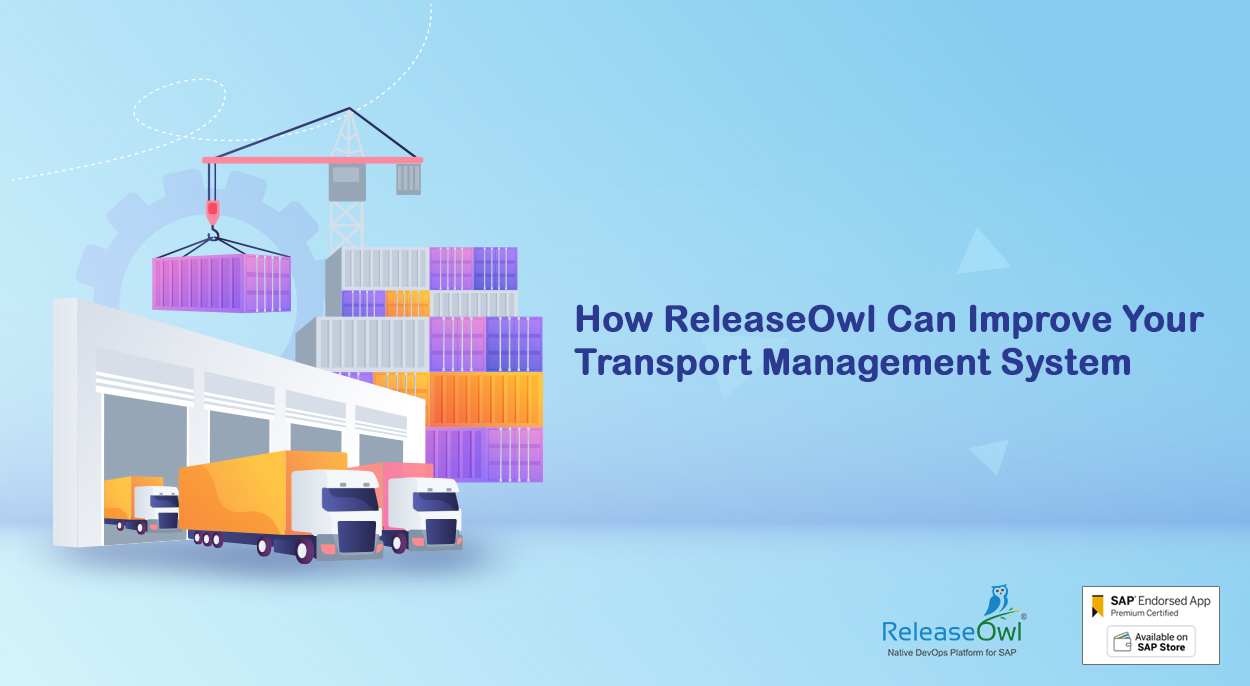Transport Management System
Transport Management System or TMS refers to one of the key components in any well-functioning SAP system. It is part of the CTS (Change and Transport System) and effects every stage of the process. The TMS helps you manage your logistics throughout the SAP environment – new requests, monitoring changes, implemented changes, and defining the landscape. It is essentially exporting objects out of the SAP system and importing them into the target systems. There are three components to TMS:
Change and Transport Organizer (CTO) – CTO is used to design and manage the SAP repository. It acts as a central environment for development.
Transport Tools – One of the most integral parts of the Transport Management System are the tools that are part of SAP Kernel, including the R3trans program and transport control program. It enables the transport of data between systems that are running on different databases or platforms.
Transport Management System (TMS) – TMS is used to manage and copy development objects across the SAP system. It can also be used for customization, in pre-defined transport routes, and to export objects from one system to another target system.
Uses of TMS
Customization: The process of adapting the SAP system according to the user’s need is known as customization. Ideally, the customization is done in dev, after which the CTO is used to log and transport customized changes. When the transport request for these changes is exported, the relevant entries are extracted from the database of the SAP system and copied to the transport directory.
Development: All development in the SAP system is done on the ABAP Workbench. The ABAP objects such as tables, data elements and domains that are used in the development process make up the repository. The workbench is completely integrated with TMS so that all workbench changes are recorded and transported using TMS.
Challenges
As the enterprise scales, transport management in SAP can get increasingly more daunting. The SAP teams in large enterprises are used to running complex SAP programs in parallel, making it that much more complicated. Even smaller teams that run their change management manually can find that transports become more complex over time. The most used tools for this are ChaRM and Solman, however, even with these tools, there are some challenges that developers face during SAP transport management:
- Maintaining and running Solman and ChaRM is tricky and takes time
- Retrofit changes, especially across landscapes result in conflicts. This can happen with a tool as well with manual transport management
- New SAP systems are not very easy to add to the SAP landscape
- While it is possible to create CI/CD pipelines, test automation and monitoring; it becomes too complex while scaling
- Maintaining excel datasheets for transport dependencies is not possible when the project scales
- Manual coordination can cause developers to miss transports and end up with import errors
- Inaccuracy or issues that arise in sequencing can cause downgrade protection issues
Transport Management with ReleaseOwl
A Native SAAS DevOps platform for SAP, ReleaseOwl has been designed to allow for easy and seamless transport management. With ReleaseOwl, you can not only create and sync transports for workbench and customizing requests but can also perform other functions such as the release and import of transports, critical object management, transport impact analysis, TOC, and retrofit.
Syncing Transports: Transports are synced with the source environment of the SAP landscape to ReleaseOwl. All the latest changes made to the transports will be updated as well.
Critical Objects: Critical objects are those that require mandatory review. These objects are marked and can be viewed, edited, and approved in the Manage Critical Objects section. Once an object is marked ‘Active’, it can’t be deployed until it has been approved.
Transport Impact Analysis: This early warning feature helps developers produce the highest quality code and changes, right at source.
TOC: Once a normal transport is released, you will not be able to make any changes to it. In order to make any further changes after the release, an entirely new transport request must be placed. Because of this importing via TOC proves to be more efficient. TOC, or Transport of Copies, will ensure that you make a copy of the changes and put them in a target system for testing. This way, in case there are any further changes or fixes, you can add them in this copy. Once the testing is completed, it can be release. This reduces the number of transports your overall user story will require.
Retrofit: You can sync your urgent and normal changes using retrofit. With ReleaseOwl, you can make edits in your transports seamlessly, without affecting the changes that have already gone into production. This immensely reduces the time and effort taken by developers in resolving conflicts.
Apart from this, the Actions tab in ReleaseOwl can also help you Validate your transports by performing
- Release Status Checks
- Downgrade Protection Checks
- Cross Reference Checks
- Cross Release Checks
- Critical Object Checks
- And analyze your Validation Report
You can also
- Edit Objects
- Load Objects
- Save Objects and
- Release the transport
ReleaseOwl helps optimize your Transport Management process and make your teams far more efficient and productive. To learn more about how ReleaseOwl can help your enterprise make the best use of SAP, write to us at: sales@releaseowl.com






Leave A Comment